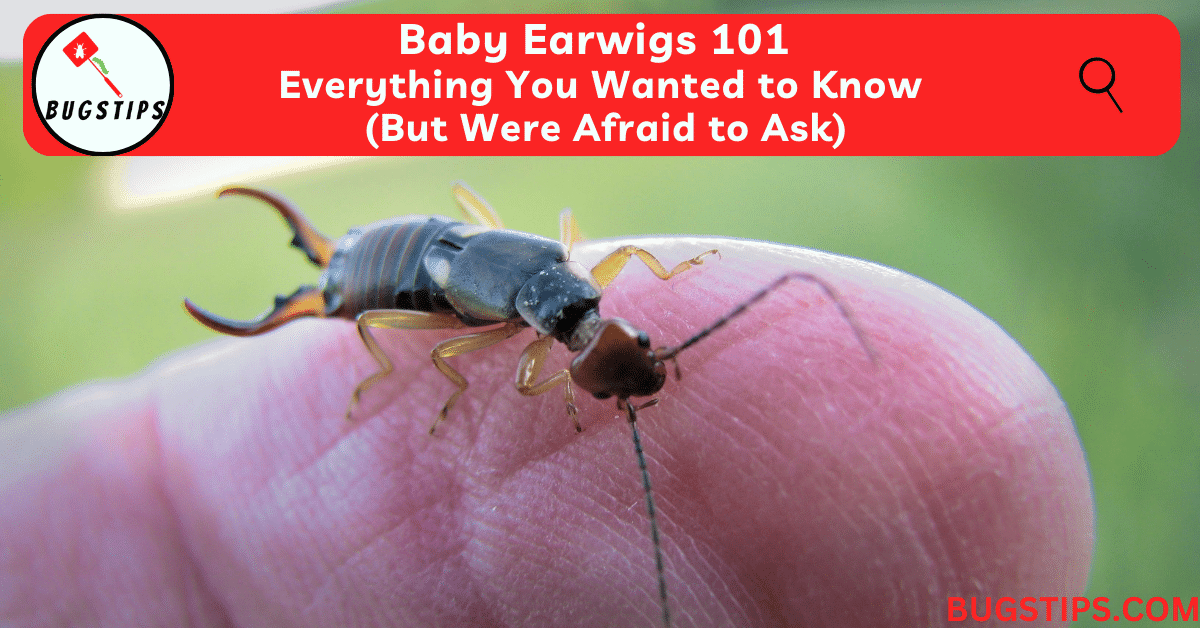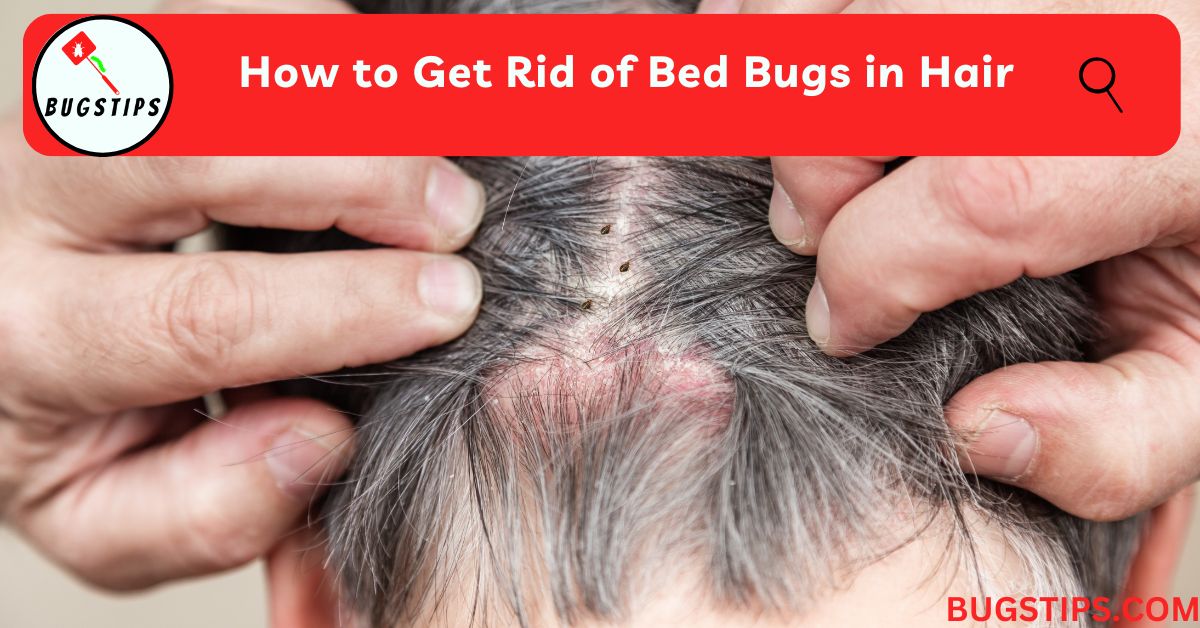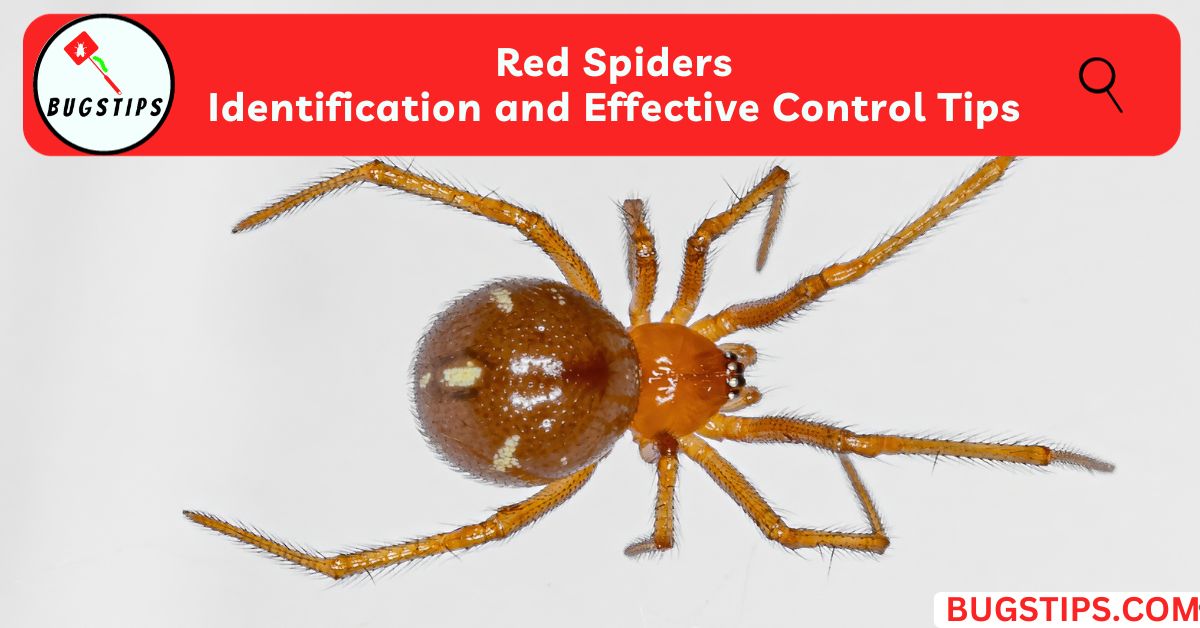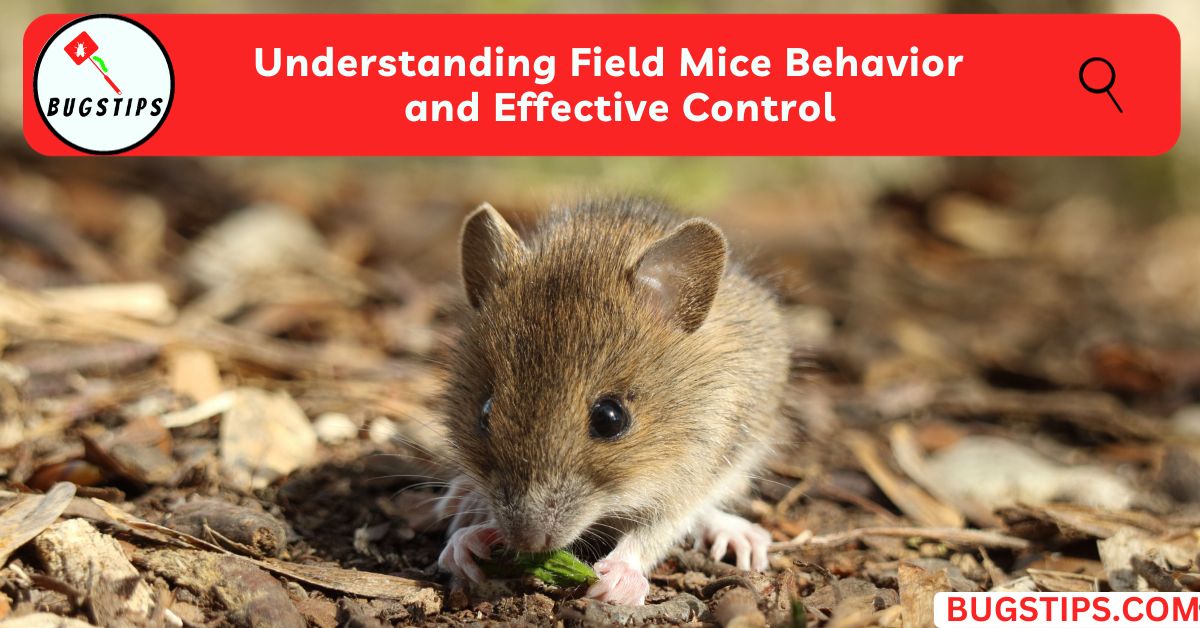This post may contain affiliate links which means as an Amazon Associate, this site may earn a small commission on qualified purchases made through links at no extra cost to you. Learn more on Affiliate Disclosure
Are you curious about baby earwigs? These tiny insects are a common sight in many parts of the world, yet they remain mysterious to most of us. In this article, we’ll explore everything you need to know about baby earwigs, from their appearance and behavior to their habitats and eating habits.
Earwigs, also known as pincher bugs, belong to the order Dermaptera. They are easily recognized by their long, flat bodies and pincer-like cerci, located at the end of their abdomen. While adult earwigs are nocturnal and tend to hide during the day, baby earwigs are often more active and can be found in various environments.
In this article, we’ll take a closer look at what baby earwigs look like and how they behave. We’ll also explore their life cycle, reproduction, and the characteristics of adult earwigs. Additionally, we’ll address some common questions about baby earwigs, such as whether they can fly and what they eat.
So, if you’re interested in learning more about these fascinating creatures, keep reading! By the end of this article, you’ll have a better understanding of baby earwigs and their place in the natural world.
What is Baby Earwigs?
Baby earwigs are the offspring of adult earwigs, which are insects that belong to the Dermaptera order. They are often referred to as pincher bugs because of their distinctive pincer-like cerci at the end of their abdomen. Baby earwigs are smaller versions of their adult counterparts but have not yet fully developed their wings or pincers.
Earwigs go through a gradual metamorphosis, which means that they do not have a pupal stage like some other insects. Instead, baby earwigs hatch from eggs that are laid in the soil by adult females. The eggs hatch into small nymphs that resemble the adults but lack wings and pincers.
As they grow, baby earwigs go through several molts, shedding their exoskeletons and growing new ones. Each time they molt, they become larger and more closely resemble adult earwigs. During this time, they feed on a variety of plant and animal matter, including other insects, decaying plant matter, and even small vertebrates.
After several molts, baby earwigs reach their final instar, at which point they are fully developed and can mate and reproduce. The entire life cycle of an earwig can take anywhere from a few months to a few years, depending on factors such as temperature and availability of food.
The Appearance of Baby Earwigs
Baby earwigs have a distinctive appearance that sets them apart from other insects. They have long, flat bodies that are segmented and can range in color from pale yellow to dark brown. Their bodies are covered in a hard exoskeleton that provides protection and support.
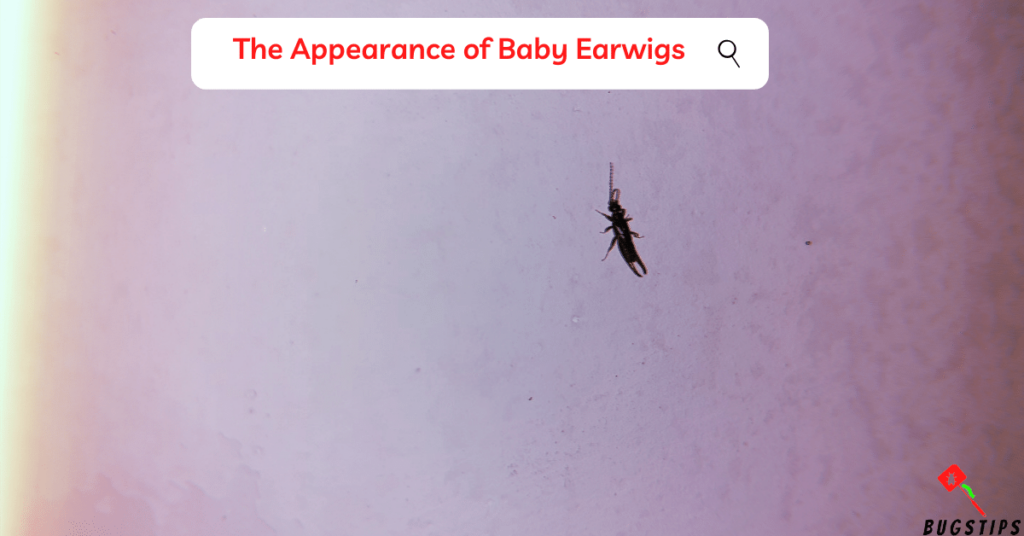
One of the most distinguishing features of baby earwigs is their cerci, which are two small, curved appendages located at the end of their abdomen. These cerci resemble pincers, but they are not fully developed in baby earwigs and do not have the same gripping power as those of adult earwigs.
Baby earwigs also have longer antennae than their bodies, which they use to sense their environment and locate food. They have six legs that are thin and spindly, which allow them to move quickly and easily through the soil and other substrates.
In terms of size, baby earwigs are much smaller than adult earwigs, typically measuring only a few millimeters in length. They do not yet have wings and are not capable of flight.
You’ll Also Like – The Fascinating World of Earwig Poop
The Behavior of Baby Earwigs
Baby earwigs are active and agile insects that move quickly through soil and other substrates. They use their six spindly legs to scuttle along the ground, and their long antennae to sense their surroundings and locate food.
Although they are smaller than adult earwigs, baby earwigs still exhibit some of the same behaviors and habits. They are social insects that live in groups and often interact with each other. They use their antennae and cerci to communicate, and will sometimes touch antennae with other earwigs in a behavior known as antennal boxing.
Baby earwigs are also responsive to their environment and will adapt their behavior accordingly. For example, if they encounter a predator or other threat, they may use their cerci to defend themselves or to try and escape. If conditions become unfavorable, such as if the soil becomes too dry or too wet, they may move to a new location in search of better conditions.
Reproduction of Baby Earwigs
Baby earwigs go through three distinct stages of development: egg, nymph, and adult.
Female adult earwigs lay their eggs in small batches in protected areas, such as under rocks or in crevices. The eggs hatch after a few days and the baby earwigs emerge as nymphs.

During the nymph stage, baby earwigs resemble their adult counterparts but are smaller and lack wings. They go through several molts as they grow and develop, shedding their exoskeleton to reveal a larger one.
As they mature, baby earwigs gradually develop wings and reach their adult size. The time it takes for a baby earwig to reach adulthood depends on factors such as temperature and food availability.
Once they reach adulthood, earwigs can mate and start the reproductive cycle over again. Adult earwigs can live for up to a year, depending on environmental conditions.
Are Baby Earwigs Harmful to Humans?
One of the most common misconceptions about earwigs is that they can crawl into people’s ears and cause harm. However, this is entirely untrue. While earwigs do have pincers at the end of their abdomens, they are not strong enough to cause any harm to humans.
Baby earwigs are generally harmless to humans. They do not carry any diseases and are not known to bite or sting. However, they do have the potential to cause minor irritation if they come into contact with the skin.
It is important to note that while baby earwigs are not harmful to humans, they can be pests in gardens and homes. They have been known to feed on plants and can sometimes cause damage to crops.
So while baby earwigs may be a nuisance to gardeners and homeowners, they are not harmful to humans. So, there is no need to fear these little creatures!
Can Baby Earwigs Fly?
Baby earwigs, like their adult counterparts, cannot fly. Instead, they rely on crawling and using their pincers to navigate their environment. Although they may not be able to fly, they are still quite agile and can move quickly when they need to.
Baby earwigs also can curl up their abdomen, which can make them more aerodynamic and may allow them to move more easily through tight spaces. However, for the most part, they prefer to stay on the ground and move around using their six legs. It’s worth noting that while baby earwigs cannot fly, some adult earwigs do have wings and can fly short distances.
Related Article – Can Earwigs Fly? Here are the 10 Surprising Truth
What Do Baby Earwigs Eat?
Baby earwigs are omnivores, which means they eat both plants and animals. They have a wide-ranging diet that can include insects, plant matter, and even decaying organic matter.
As baby earwigs develop, they will eat almost anything they can find, including smaller insects, spiders, and mites. They will also eat young plants and their roots, making them a potential garden pest.
Baby earwigs are nocturnal and feed at night. They use their pincers to grab their prey and will also scavenge for food. Their feeding habits can be beneficial in controlling other pest populations, but they can also cause damage to plants if their numbers are too high.
As baby earwigs grow and mature into adults, their diet may change slightly, but they will still consume a variety of plant and animal matter. It’s important to note that while earwigs can be beneficial in controlling other pest populations, they can also be a nuisance if their numbers become too high.
Related Article – What Do Earwigs Eat?
Where Do Baby Earwigs Live?
Baby earwigs can be found in a variety of natural habitats, including forests, grasslands, and gardens. They tend to prefer warm and damp environments, such as under rocks, in mulch or compost piles, and beneath decaying vegetation.
In addition to outdoor environments, baby earwigs can also be found inside homes and buildings. They may enter homes through small cracks or openings, and can often be found in basements, bathrooms, and other damp areas.
You’ll Also Like – Do Earwigs Make Noise? Discover the Fascinating Truth!
How to Get Rid of Baby Earwigs?
Baby earwigs are not harmful to humans, but they can be a nuisance if they infest your home or garden. If you want to get rid of baby earwigs, there are a few methods you can try.
One effective way is to use boric acid powder. Boric acid is a natural insecticide that can be sprinkled in areas where earwigs are present, such as around the perimeter of your home or garden. The powder will stick to their bodies and dehydrate them, eventually causing them to die. Be sure to wear gloves when handling boric acid, as it can be harmful if it comes into contact with your skin.
Another way to get rid of baby earwigs is to use traps. Rolled-up pieces of cardboard or magazines can be placed in areas where earwigs are present. The earwigs will crawl into the traps and can then be disposed of in a bucket of soapy water. This method can be effective, but it may not eliminate all of the earwigs in your home or garden.
In addition to these methods, it’s important to keep your home and garden clean and free of clutter. Earwigs are attracted to dark, damp places, so be sure to remove any piles of leaves or debris around your home. You can also use a dehumidifier to reduce the moisture in your home, which will make it less appealing to earwigs.
If you have a severe infestation of baby earwigs, contacting a pest control professional may be best. They can assess the situation and recommend the most effective method of elimination.
Final Thoughts
Baby earwigs may look intimidating with their pincers and fast movements, but they are harmless to humans. They play an important role in the ecosystem as decomposers, helping to break down organic matter in the soil.
Although they may not be harmful, some people may still want to get rid of baby earwigs if they become a nuisance in their homes or gardens. There are several methods to control their population, such as using boric acid powder or traps.
It’s important to remember that earwigs, like all living creatures, have their place in the natural world. If they are not causing harm, it’s best to let them go about their business. By learning more about these fascinating insects, we can appreciate their role in the ecosystem and coexist with them peacefully.
FAQs
What do newly hatched earwigs look like?
Newly hatched earwigs, also known as nymphs, look similar to adult earwigs but are smaller in size and lack wings. They have a white or yellowish color and soft, translucent skin.
Do baby earwigs bite?
Yes, baby earwigs do have the ability to bite, but they typically only do so if they feel threatened. Their bites are not harmful to humans.
Are baby earwigs poisonous?
No, baby earwigs are not poisonous and do not pose any significant threat to humans. While they do have the ability to defend themselves with their pincers, their bites are not harmful.
What do baby earwigs do?
Baby earwigs play an important role in the ecosystem by helping to break down decaying organic matter and serving as a food source for larger predators. They also help to control populations of other insects in their habitat. As they mature, they continue to contribute to the ecosystem and become active predators themselves.
Resources – (for further reading)
Field of Mars Environmental Education Centre – Earwigs
maine.gov – Earwig-harvard.pdf
Bugguide – bgimage, gradual metamorphosis

